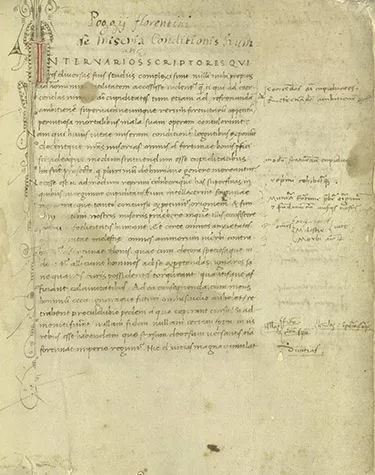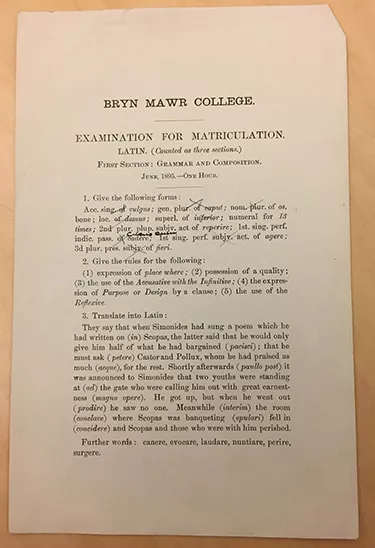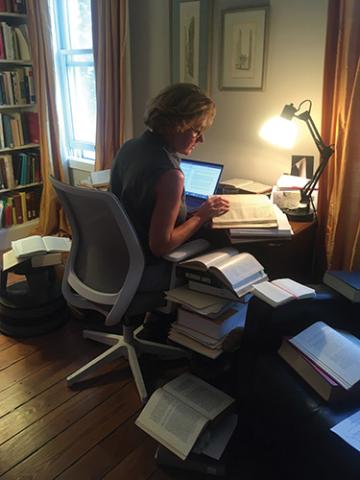Private Lives of Old Books
A new exhibition: Private Lives of Old Books: Recovering Personal Histories from Early Books of Latin.
In the summer of 1885, Gertrude Allinson was provisionally accepted as a member of the first class at Bryn Mawr on the condition that she retake the Latin sight-reading examination when school started in the fall. In putting Allinson through the trial of a new test, Bryn Mawr was upholding the long tradition in the West that made proficiency in Latin a prerequisite for advanced education and a professional career.
The new exhibition in Canaday Library this fall, Private Lives of Old Books: Recovering Personal Histories from Early Books of Latin, will examine how individual people contended with Latin by looking at the notes, drawings, and doodles that readers have left in their Latin books over nearly a millennium. The examples are drawn from the College’s extensive holdings of medieval manuscripts and early printed books, as well as Bryn Mawr’s Latin entrance examinations that were such a challenge to Allinson.
The exhibition is organized by Kate Barnes, a graduate student in Greek, Latin, and Classical Studies; and Catherine Conybeare, Leslie Clark Professor in the Humanities and Professor of Greek, Latin, and Classical Studies. The idea for the exhibition came from Conybeare’s work as the editor of a new series of books from the Cambridge University Press called Cultures of Latin from Antiquity to the Enlightenment, which will feature books that chart the reading and writing of Latin as a continuous tradition.
In her introduction to the exhibition catalogue, Conybeare writes about the approach that we are taking with this exhibition of Latin texts, an approach that focuses on the people who read the books rather than on the books themselves:
“We can’t undo the historical cachet of Latin or its association with the ruling classes. What we can do—what we are doing in this exhibition—is to particularize it. Instead of an idealized bastion of Latinness designed to repel the unworthy, we are showing the encounter of individual people with individual pieces of Latin. They struggle; they try harder; they mark passages; they gather little bits of erudition; they give up altogether and doodle or scribble or color in the pictures.”
In her catalogue essay, Barnes talks about her experiences working on the exhibition:
“I was not sure what to look for, so I simply looked. As a classicist, my scholarly work is obsessed with text. However, I became fascinated with these books as material objects and archives of easily overlooked and yet immensely relatable histories of use. Books—and old, rare, precious books are no exception to this—were, and still are, living objects.”
The exhibition will open on Friday, Sept. 24, and will run through Friday, Dec. 17. The opening events will include a talk by Joseph Farrell, professor of classical studies at the University of Pennsylvania. Also speaking in conjunction with the exhibition will be Marjorie Curry Woods, Sue Goldston Leberman Professor of Liberal Arts at the University of Texas and author of Weeping for Dido: The Classics in the Medieval Classroom. Her lecture will take place on Nov. 8.
Assisting Conybeare and Barnes with the exhibition’s development were Carrie Robbins, M.A. ’09, Ph.D. ’13, curator/academic liaison for art and artifacts; Eric Pumroy, director of special collections; and Marianne Hansen, curator/academic liaison for Rare Books and Manuscripts. The exhibition and catalogue design were done by Nathanael Roesch, Ph.D. ’17.
Published on: 09/21/2021


